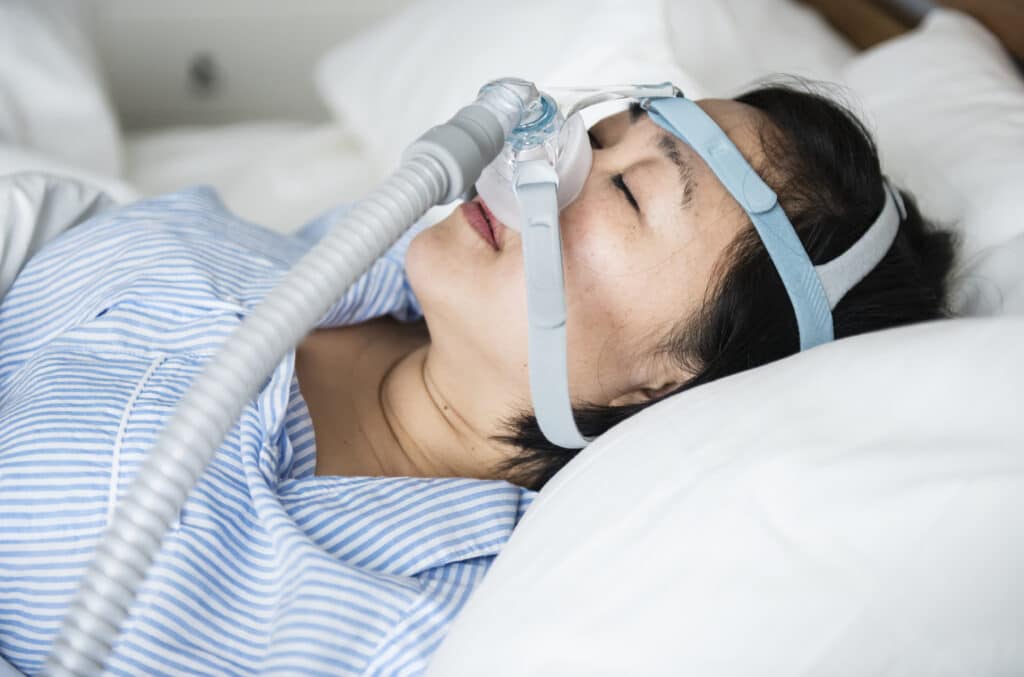The Philips CPAP (Continuous Positive Airway Pressure) machines, vital for the management of sleep apnea, underwent a significant recall in June 2021.
CPAP machines are composed of a facemask, a tube, and a motor that propels air through the tube, assisting patients with obstructive sleep apnea to maintain open airways during sleep.
Philips CPAP Recall
Philips voluntarily recalled millions of its devices in June 2021. Products include CPAP, BiPAP (Bi-Level Positive Airway Pressure), and mechanical ventilator devices. The action was instigated by the potential health risks associated with the degradation of polyester-based polyurethane (PE-PUR), a sound abatement foam used in the devices.
Philips cautioned that inhalation or ingestion of particles or gasses emanating from the deteriorated foam could lead to harmful respiratory effects, toxicity, and carcinogenic outcomes.
By the end of 2022, the FDA received over 98,000 medical device reports associated with side effects potentially linked to the PE-PUR foam. The spectrum of reported effects ranged from mild symptoms like cough, dizziness, and headache to more severe outcomes such as asthma, respiratory difficulties, chest pain, cancer, infections, and even the formation of nodules.
A total of 346 deaths were also reported to be related to this issue.
Laboratory Test Results
After conducting laboratory tests, Philips discovered that the degraded foam could potentially expose consumers to a range of toxic chemicals. These include Diethylene glycol, Dimethyl diazene, Phenol, Toluene diamine, and Toluene diisocyanate.
The potential health risks associated with these recalled devices have led to numerous lawsuits by users who reportedly suffered personal injuries. These lawsuits assert that Philips CPAP devices are defective and that the company did not adequately disclose the potential for serious injury.

Philips: ‘Degraded foam unlikely to pose health risks.’
Philips argued that emissions from the degraded foam were unlikely to pose health risks to CPAP users. The foam degradation was subsequently blamed on ozone cleaners, as tests revealed that devices cleaned with ozone cleaners were 14 times more likely to exhibit foam degradation.
Philips issued a caution to CPAP and BiPAP users in September 2022 about the potential for Philips magnetic masks to interact with metallic implants within patients’ or caregivers’ bodies. Although Philips stopped short of issuing a recall for these masks, it recommended discontinuation of their use in patients with metallic implants to avoid injury.
All Devices Manufactured Before April 26, 2021
| Ventilator Type | Device Names |
|---|---|
| Continuous Ventilator | Trilogy 100 |
| Trilogy 200 | |
| Garbin Plus, Aeris, LifeVent | |
| Continuous Ventilator, Minimum Ventilatory Support, Facility Use | A-Series BiPAP Hybrid A30 (not marketed in US) |
| A-Series BiPAP V30 Auto | |
| Continuous Ventilator, Non-life Supporting | A-Series BiPAP A40 |
| A-Series BiPAP A30 | |
| Continuous Ventilator, Minimum Ventilatory Support, Facility Use | E30 (Emergency Use Authorization) |
| Continuous Ventilator, Non-life Supporting | DreamStation ASV |
| DreamStation ST, AVAPS | |
| SystemOne ASV4 | |
| C-Series ASV | |
| C-Series S/T and AVAPS | |
| OmniLab Advanced+ | |
| Noncontinuous Ventilator | SystemOne (Q-Series) |
| DreamStation | |
| DreamStation Go | |
| Dorma 400 | |
| Dorma 500 | |
| REMstar SE Auto |
What is a CPAP machine?
The Philips CPAP machine is effective at managing sleep apnea. This system includes the CPAP machine itself, a flexible tube, and a facemask that comfortably fits over the nose and mouth. The specific design and feature set of these components can differ between models, leading to a range of options in terms of machine and maintenance costs.
A Philips CPAP machine operates by pushing oxygenated air through the tube and into the facemask. This continuous airflow is especially beneficial for those grappling with sleep apnea since it helps mitigate the occurrences of apnea episodes during sleep.
Obstructive sleep apnea disrupts sleep as the tongue, uvula, or soft palate shift position during sleep and obstruct the airway. This causes the individual to frequently wake up gasping for air. A CPAP machine can keep the upper airway open and reduce the obstruction that causes these sleep disruptions.
The consequences of untreated sleep apnea can be severe, with the potential for increased risk of high blood pressure, Type-2 diabetes, liver issues, heart disease, severe fatigue, and cognitive difficulties. These illnesses are primarily caused by a temporary lack of oxygen during apnea episodes.
Possible side effects of CPAP therapy
CPAP therapy, though highly effective in managing sleep apnea, can occasionally lead to certain side effects. However, it’s important to note that many of these side effects are generally mild and often diminish as individuals adapt to the use of the machine.
The CPAP mask is a prevalent source of discomfort for many new users. Ill-fitting masks can cause air leaks, leading to dry eyes and nose irritation. Sometimes, wearing the mask can result in rashes or sores on the face. A poorly adjusted chin strap might also contribute to dental problems in some cases.
Adjusting to the sensation of breathing pressurized air can be challenging at first. Some patients experience insomnia, abdominal discomfort, mild ear pain, and feelings of claustrophobia. In some cases, individuals may also be diagnosed with a respiratory infection.
Many of these side effects can be treated by making certain adjustments, like switching to a different type of mask or incorporating a humidifier. It’s important to see your doctor if the symptoms continue.
How much does a CPAP machine cost?
The cost of a CPAP machine can vary significantly depending on various factors. A standard CPAP machine can range from $500 to $3,000.
The broad price range reflects the variety of features and options available. The base price of these machines is usually at the lower end of the spectrum, while high-end models include more expensive advanced features.
Certain factors significantly influence the cost of a CPAP machine. One of the primary aspects that can alter the price is the machine’s type. There are three main types of machines – CPAP, APAP (Automatic Positive Airway Pressure), and BiPAP (Bilevel Positive Airway Pressure). Each offers a different level of pressure adjustment functionality, with APAP and BiPAP models typically being more expensive than basic CPAP models due to their advanced capabilities.
Another factor that can affect the price is the inclusion of additional features. Some machines come with built-in humidifiers, heated tubing, advanced data tracking, or even auto-titration capabilities, which allow the machine to self-adjust the pressure based on the user’s needs. Machines equipped with these enhancements will be more expensive than those without.
Also, the brand of the CPAP machine can influence the price. Renowned brands such as Philips may be priced higher due to their reputation for quality and reliability. It’s also worth noting that while the initial investment may seem high, many users find the potential health benefits and improved quality of life make it a worthy investment.

Will my insurance pay for the CPAP machine?
Most insurance companies will pay for some or all of the costs. Both Medicare and most private insurance companies provide coverage for CPAP machines as they are classified as Durable Medical Equipment (DME).
For Medicare, as part of Part B coverage, beneficiaries are typically covered for the machine rental and purchase, along with necessary accessories like masks, tubing, and filters. However, Medicare coverage usually requires that the patient has had a sleep study to confirm the diagnosis of obstructive sleep apnea, and the CPAP machine must be prescribed by a doctor.
Also, it’s important to note that Medicare typically covers 80% of the cost (after the deductible is met), leaving the remaining 20% to be paid by the beneficiary.
Private insurance coverage for CPAP machines and accessories varies widely based on the specifics of the individual plan. Some insurance plans may cover the full cost, while others may cover a percentage or require a copay. Most insurance companies also require a diagnosis of sleep apnea from a sleep study and a doctor’s prescription for the machine.
Contact your insurance provider or Medicare to get the most accurate and current information regarding CPAP machine coverage under your specific plan.
References
- https://www.cpap.com/blog/does-insurance-cover-cpap/
- https://www.fda.gov/medical-devices/safety-communications/update-certain-philips-respironics-ventilators-bipap-machines-and-cpap-machines-recalled-due
- https://www.healthsqyre.com/education/united-healthcare-cpap-coverage/
- https://www.medicare.gov/coverage/continuous-positive-airway-pressure-devices
- https://www.philips.com/a-w/about/news/archive/standard/news/press/2022/20220628-philips-provides-update-on-philips-respironics-pe-pur-sound-abatement-foam-test-and-research-program.html
- https://www.sleepassociation.org/sleep-apnea/cpap-treatment/cpap-side-effects/
- https://www.usa.philips.com/a-w/about/news/archive/standard/news/press/2021/20210614-philips-issues-recall-notification-to-mitigate-potential-health-risks-related-to-the-sound-abatement-foam-component-in-certain-sleep-and-respiratory-care-devices.html
- https://www.usa.philips.com/c-dam/corporate/newscenter/global/standard/resources/healthcare/2022/masks-with-magnets/philips-respironics-faq-notification-masks-with-magnets-09092022.pdf
